
Geografie
Scope & Guideline
Unveiling the dynamics of earth-surface processes.
Introduction
Aims and Scopes
- Interdisciplinary approaches to geographical research:
The journal emphasizes the integration of diverse methodologies from social sciences, natural sciences, and humanities to provide a holistic understanding of geographical phenomena. - Urban and regional studies:
A core area of focus is the analysis of urban environments, regional development, and spatial planning, particularly in the context of Central and Eastern Europe. - Environmental geography:
The exploration of anthropogenic impacts on ecosystems, water quality, and climate variability is a significant theme, showcasing the journal's commitment to environmental sustainability. - Educational geography:
The journal also addresses geographical education, investigating pedagogical methods and curriculum development to enhance geography teaching and learning. - Cultural and historical geography:
Research on the historical transformations of landscapes and regional identities provides insights into the socio-cultural dimensions of geography.
Trending and Emerging
- 3D cartographic visualizations:
There is an emerging trend towards utilizing advanced 3D visualizations in cartography, reflecting the increasing importance of technology in geographic representation and analysis. - Anthropogenic impacts on ecosystems:
Research focusing on the anthropogenic effects on watercourses and environmental quality is trending, emphasizing the journal's relevance in discussions about environmental sustainability and management. - Social geography and migration studies:
The examination of migration trends, especially related to refugee movements and integration policies, is increasingly prominent, highlighting the journal's engagement with contemporary social issues. - Climate change and its socio-economic impacts:
Papers addressing hydroclimatic variables and their consequences on regional development are gaining traction, indicating a heightened awareness of climate-related challenges. - Educational methodologies in geography:
An increased focus on innovative educational practices and the role of geography in curriculum development reflects a growing interest in enhancing geography education for future generations.
Declining or Waning
- Traditional cartography:
There has been a noticeable decrease in papers focusing solely on traditional cartographic techniques, as the field evolves towards more advanced digital mapping technologies and 3D visualizations. - Static historical analyses:
Research that primarily emphasizes static historical analyses of geography seems to be declining, with a shift towards dynamic studies that incorporate contemporary changes and their implications. - Rural studies:
Papers specifically centered on rural geography are becoming less common, possibly due to a broader focus on urbanization and its impacts on regional dynamics. - Quantitative methodologies in isolation:
While quantitative approaches remain important, there is a declining trend in studies that apply these methods in isolation, as there is a growing preference for mixed-methods research that combines qualitative insights. - Geography of religions:
The specific focus on the geography of religions has diminished, reflecting a possible shift towards more pressing contemporary social issues within geographical research.
Similar Journals
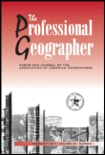
PROFESSIONAL GEOGRAPHER
Advancing Knowledge Across Geospatial FrontiersPROFESSIONAL GEOGRAPHER is a prominent journal in the fields of geography and earth-surface processes, published by Routledge Journals, Taylor & Francis Ltd. With a rich history dating back to 1949 and continuing through 2024, it serves as a vital platform for researchers, professionals, and students to explore and disseminate groundbreaking research and insights within the geographical sciences. The journal holds a respectable impact factor, placing it in the Q2 quartile for both Earth-Surface Processes and Geography, Planning and Development as of 2023, highlighting its importance in these critical academic areas. The journal ranks #273 out of 821 in Geography and Planning and #70 out of 179 in Earth and Planetary Sciences on Scopus, reflecting its robust contribution to advancing knowledge in social sciences. Although it does not currently offer open access options, it still provides invaluable content that influences pedagogy and research in geography. Its comprehensive scope invites a wide range of geospatial topics, encouraging interdisciplinary dialogue and collaboration across the global academic community.
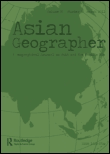
Asian Geographer
Charting New Territories in Asian GeographyAsian Geographer is a prominent journal published by Routledge Journals, Taylor & Francis Ltd, recognized for its significant contributions to the field of geography, planning, and development. With an ISSN of 1022-5706 and an E-ISSN of 2158-1762, the journal offers a platform for high-quality, peer-reviewed research that addresses vital geographical issues, particularly within the Asian context. The journal's commitment to fostering informed discourse is reflected in its Q2 category ranking in the field of Geography, Planning and Development as of 2023, and its Scopus ranking of #274 out of 821 in the same category, placing it in the 66th percentile. The Asian Geographer serves as an essential resource for researchers, professionals, and students alike, ensuring access to a wealth of knowledge that influences policy and practice. It continues to publish original research and reviews as it converges to present significant developments in geography from 1982 to 1987, 1991 to 1995, and from 2015 to 2024. This journal is vital for anyone looking to deepen their understanding of geographical dynamics in Asia and beyond.

Boletin Goiano de Geografia
Illuminating the Dynamics of Society and EnvironmentBoletin Goiano de Geografia is a distinguished academic journal dedicated to the field of Geography, published by the Universidade Federal de Goiás, Instituto de Estudos Socio-Ambientais. Since its inception in 1981, this Open Access journal has provided invaluable insights into the geographical dynamics of Brazil and beyond, promoting scholarly research and dialogue among geographers, environmentalists, and social scientists. The journal seeks to advance knowledge through the dissemination of research articles, reviews, and case studies that address contemporary issues in human and physical geography. With a commitment to fostering interdisciplinary collaboration, Boletin Goiano de Geografia serves as a vital resource for researchers, professionals, and students seeking to explore the complex interactions between society and the environment. Situated in the vibrant academic landscape of Goiana, Brazil, this journal enhances the global discourse on geographical studies and sustainability.

Cadernos de Geografia
Advancing Knowledge in Geography and BeyondCadernos de Geografia is a distinguished biannual journal published by UNIVERSIDADE DE COIMBRA, FACULDADE DE LETRAS, dedicated to the field of geography and related social sciences. With its ISSN 0871-1623 and E-ISSN 2183-4016, this journal has been a prominent platform for the dissemination of high-quality research since it became open access in 2012. Situated in Coimbra, Portugal, it aims to foster academic excellence by providing an inclusive space for innovative studies that explore contemporary geographical issues. Cadernos de Geografia encourages submissions that address diverse aspects of geography, ranging from environmental studies to urban planning, making it an invaluable resource for researchers, professionals, and students alike. As a part of the growing trend in open-access publishing, it enhances the global reach and accessibility of geographical research, thereby contributing to the enrichment of knowledge in the field.
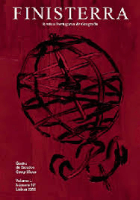
Finisterra-Revista Portuguesa de Geografia
Bridging Theory and Practice in GeographyFinisterra-Revista Portuguesa de Geografia is a distinguished academic journal published by the Centro de Estudos Geográficos, Universidade de Lisboa, since 1978, presenting a vital platform for research in the fields of Geography, Earth and Planetary Sciences. The journal operates under an Open Access model, encouraging broad dissemination of knowledge and ensuring that research is accessible to all, a commitment it has upheld since 2004. With a notable Q3 ranking in both Earth and Planetary Sciences (miscellaneous) and Geography, Planning and Development as of 2023, it serves as a significant conduit for scholarly discourse in these domains. The journal's scope reflects a diverse array of geographical studies, promoting interdisciplinary dialogue and research innovations, while its strategic publication history showcases its adaptability and relevance to contemporary issues. Researchers, professionals, and students alike are invited to engage with this pivotal resource that continues to shape geographical scholarship in Portugal and beyond.
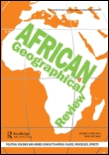
African Geographical Review
Connecting Scholars to Africa's Diverse Geographical NarrativesAfrican Geographical Review is a pivotal academic journal published by Routledge Journals, Taylor & Francis Ltd, whose mission is to advance knowledge and understanding of geographical dynamics across the African continent. With an ISSN of 1937-6812 and an E-ISSN of 2163-2642, this journal consistently delivers high-quality research, showcasing innovative perspectives and interdisciplinary approaches within the fields of Earth-Surface Processes and Geography, Planning and Development. Recognized in 2023 with a Q2 ranking in these categories, it ranks #231 out of 821 in Social Sciences and #63 out of 179 in Earth and Planetary Sciences according to Scopus metrics, reflecting its substantial impact and relevance. Featuring research that spans various geographic themes, the journal not only champions academic inquiry but also fosters a deeper understanding of spatial and environmental challenges unique to Africa. Engaging with a diverse audience of researchers, professionals, and students, the African Geographical Review serves as an indispensable resource for those committed to enhancing geographic scholarship and informing sustainable development practices across the continent.

MITTEILUNGEN DER OSTERREICHISCHEN GEOGRAPHISCHEN GESELLSCHAFT
Illuminating the Landscape of Earth-Surface ProcessesMITTEILUNGEN DER OSTERREICHISCHEN GEOGRAPHISCHEN GESELLSCHAFT, published by the Österreichische Geographische Gesellschaft, serves as a vital resource within the fields of Geography and Earth-Surface Processes. This journal, with the ISSN 0029-9138, offers a platform for scholarly articles that contribute to the understanding of geographical phenomena, particularly focusing on regional and environmental issues based in Austria since its establishment. Although lacking Open Access options, the journal maintains rigorous publication standards and has seen converged issues from 1978 to 2008, and from 2011 to 2018, alongside recent volumes from 2020 to 2023. As a Q4 ranked journal in the Scopus categories for Geography, Planning and Development, and Earth-Surface Processes, it is strategically positioned to support researchers, professionals, and students striving to enhance geographical knowledge. As such, MITTEILUNGEN DER OSTERREICHISCHEN GEOGRAPHISCHEN GESELLSCHAFT continues to foster geographical discourse and innovation, contributing significantly to the academic community.

Journal of Geographical Sciences
Elevating Standards in Geography Through Rigorous Research.Welcome to the Journal of Geographical Sciences, a premier publication in the field of Earth and Planetary Sciences that has consistently demonstrated its impact and relevance since its inception in 2001. Published by SCIENCE PRESS, this esteemed journal is recognized for its rigorous peer-review process and high-quality research, achieving an impressive Q1 ranking in the 2023 category of Earth and Planetary Sciences (miscellaneous). With the latest Scopus ranking placing it at Rank #13 of 159, putting it in the top 8% of its field, the journal serves as a vital platform for disseminating significant findings and innovative methodologies in geography, environmental studies, and related disciplines. Although not an open-access journal, it offers exceptional visibility through its publication standards and accessibility in academic databases. Based in Beijing, China, the Journal of Geographical Sciences continues to pave the way for scholarly discourse and collaborative research, appealing to researchers, practitioners, and students dedicated to advancing our understanding of geographical phenomena.
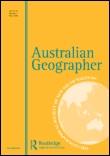
AUSTRALIAN GEOGRAPHER
Pioneering Insights into Earth-Surface ProcessesAUSTRALIAN GEOGRAPHER, published by Routledge Journals, Taylor & Francis Ltd, is a leading scholarly journal that captures the dynamic and multifaceted field of geography. With an ISSN of 0004-9182 and an E-ISSN of 1465-3311, this peer-reviewed journal has a long-standing tradition, dating back to its origins between 1928 and 1929, and is essential for those engaged in cutting-edge research in Earth-Surface Processes and Geography, Planning and Development. Recognized for its academic rigor, the journal holds a prestigious Q1 ranking in both Earth-Surface Processes and Geography categories as of 2023. Furthermore, its Scopus rankings underscore its influence, placing it in the top 30% of its field. Although it does not currently offer Open Access, AUSTRALIAN GEOGRAPHER remains a critical platform for presenting significant geographic research and fostering academic dialogue, making it indispensable for researchers, professionals, and students eager to contribute to the evolving landscape of geographic scholarship.
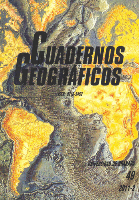
Cuadernos Geograficos
Fostering collaboration for a deeper understanding of geography.Cuadernos Geograficos is a distinguished open access journal published by UNIV GRANADA in Spain, dedicated to advancing the fields of geography, planning, and earth-surface processes. With an ISSN of 0210-5462 and E-ISSN 2340-0129, this journal has been serving as an essential platform for scholars since its inception in 1983. By providing rigorous peer-reviewed research, Cuadernos Geograficos contributes significantly to the academic discourse within these disciplines, holding a respectable position in the Q3 category for both Earth-Surface Processes and Geography, Planning, and Development as of 2023. The journal is indexed in Scopus, ranking #431/821 in Social Sciences and #100/179 in Earth and Planetary Sciences, affirming its relevance and impact within the scholarly community. With its commitment to open access since 1999, Cuadernos Geograficos ensures that vital research is accessible to a diverse audience of researchers, professionals, and students, fostering knowledge sharing and collaborative advancements in the geographical sciences.